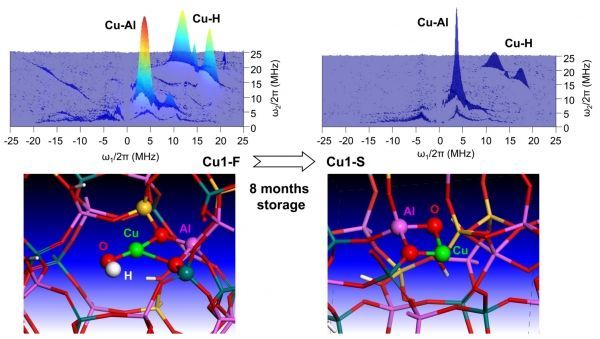Several years ago, a relatively new catalyst for vehicle emission control began showing signs of trouble. Used to control tailpipe nitrogen oxides in diesel trucks, Cu/SAPO-34 catalysts slowly began to fail after a year or two, and no one could figure out why.
A team at PNNL has solved the mystery at last, finding that this seemingly suicidal catalyst wasn’t actually self-destructing but was the victim of an external assailant. Their paper, "Unraveling the mysterious failure of Cu/SAPO-34 selective catalytic reduction catalysts," has been published in Nature Communications.
Cu/SAPO-34 is a type of selective catalytic reduction (SCR) catalyst specially designed to reduce nitrogen oxide pollution in today's more fuel-efficient engines. Its inexplicable deactivation was the first challenge presented to staff scientist Feng Gao when he joined PNNL in 2011. He and colleagues examined both fresh and used samples of the catalyst, seeking a diagnosis for its failure.
Read more at Pacific Northwest National Laboratory
Image: In the upper left panel, strong Cu signals are detected by 2-dimensional electron paramagnetic resonance for the fresh Cu/SAPO-34 catalyst. However, for the deactivated one, 90 percent of the Cu signals are lost, as evidenced from the spectrum shown in the upper right panel. Through density functional theory simulations, the researchers provided detailed pathways for how Cu is repositioned from its SCR active location (lower left panel) to its SCR inert location (lower right panel). CREDIT: Pacific Northwest National Laboratory


